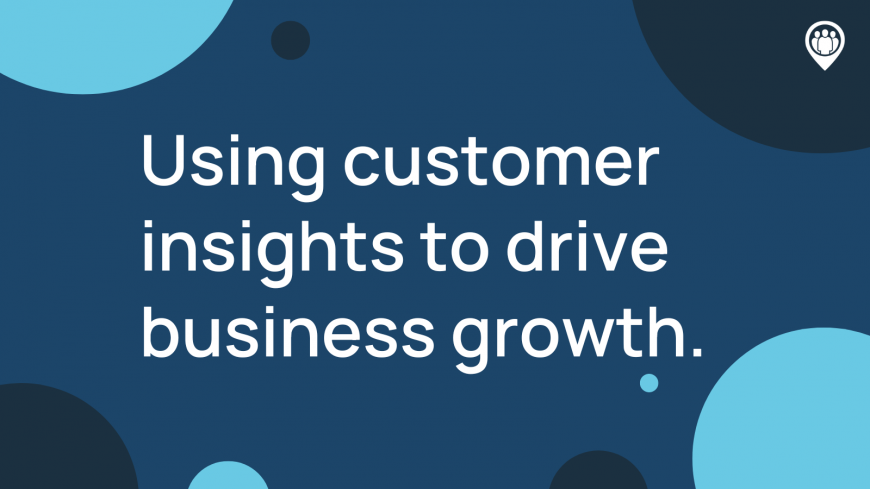How to Gather and Use Customer Insights to Improve Experience
Richard Knowles posted on 19 October 2022

Most, if not all, business say they put their customers first; which must mean they know exactly what the customer thinks and wants, right?
In most cases this is probably correct to one degree or another, but in a technological driven world, how can business ensure they know what their customers want?
Claiming to know and actually knowing are two different things, hence the need for many organisations to dip into data, to find out if whether what they think their customers want, is actually what they want.
Technology means we all have the ability to access huge amounts of data in the blink of an eye, mostly through paid for subscriptions.
This has led to the emergence of organisations offering data services which, according to Forrester, are growing at an average of 30% or more every year.
It means ‘big data’, which translates as customer insights, is now a vital way of creating value in a business, giving power back to businesses and removing the dependence on what people think or feel.
But what does customer insights exactly mean?
Put simply, it is the gathering and then interpreting of qualitative and quantitative data, which is collated through the likes of customer feedback.
This information is gathered then analysed to support business decisions, through the identification of behavioural trends; which in turn enable businesses to create marketing and sales strategies, that effectively engage with customers.
The end goals are to achieve sales and develop ongoing positive brand relationships with customers – therefore delivering long-term sales and advocacy.
The big question now is, how to gather customer insights.
Customer insights are really the conclusions you reach, using various data sources, to help make decisions. Which means there are a number of different ways to achieve those insights.
Customer Feedback
This is probably the simplest of ways to gather customer insights, as it just asks them directly what they think.
How you do this is through questionnaires asking how your organisation is working for them, surveys and social media posts.
The findings can be applied to future activity and campaigns to strengthen the business and customer relationship.
While it’s a great way to have that direct feedback, it’s always worth caveating the information with the fact that some customers might be nervous about submitting their true thoughts, or not give enough feedback beyond the ‘average’ score or minimal written response that doesn’t add any value.
Data from third parties
If gaining enough insights using your own customers proves tricky, then utilising information from bigger organisations with better market research capabilities can be useful.
Understanding the trends of your customers within your industry will put you in a better position when it comes to knowing their needs and wants.
This will support much more targeted marketing activity, provide different levels of product or service and deliver them to customers by making them feel appreciated and understood.
Real Time User Testing
If you’re running websites, apps and anything online, utilising A/B testing can help provide certain insights in customer inclinations.
The benefits of using this method are that you get almost instant feedback on the variables and can quickly dial up or down activity to what the majority of your customer database ‘decide’ or ‘prefer’.
Customer Sentiment
However you measure the sentiments of customers, it can provide invaluable insights, which in some cases can be even more significant than surveys.
Giving customers easy to use digital ways of telling you how they feel about your product or service, can help quickly build up a picture of levels of satisfaction.
This can be as granular as knowing how people feel about your organisation following contact with your sales of customer service teams.
Predictive Models
Predictive modelling is another way that companies are readily using when they need to make decisions using insights.
Using the likes of AI organisations are using statistical models and algorithms to analyse huge amounts of insights, in a significantly quicker way than use humans.
It also means insights are quick to access and are often accurate in looking at how customers have engaged with a business.
Passively Collected Behavioural Data
Using common tools that are readily available can help ensure you understand how customers interact with your content, services, products and website.
Combine this with what customers are telling you and it creates a strong proposition to build effective marketing, social and PR campaigns.
The likes of Google Analytics, social media dashboards including Hootsuite and heat mapping software such as Hotjar, which provides heat maps of what areas of your web pages your customer are spending time on, can provide insights that can have a huge impact on your revenue.
Add this to keyword search tools including Google Trends can ensure you not only understand a customers online preferences, but how you can tweak your offering to ensure loyalty and advocacy.
These six areas will all help turn knowledge and data into valuable customer insights, and create the support tool to help all businesses work better, smarter and deliver what their customers actually want.




